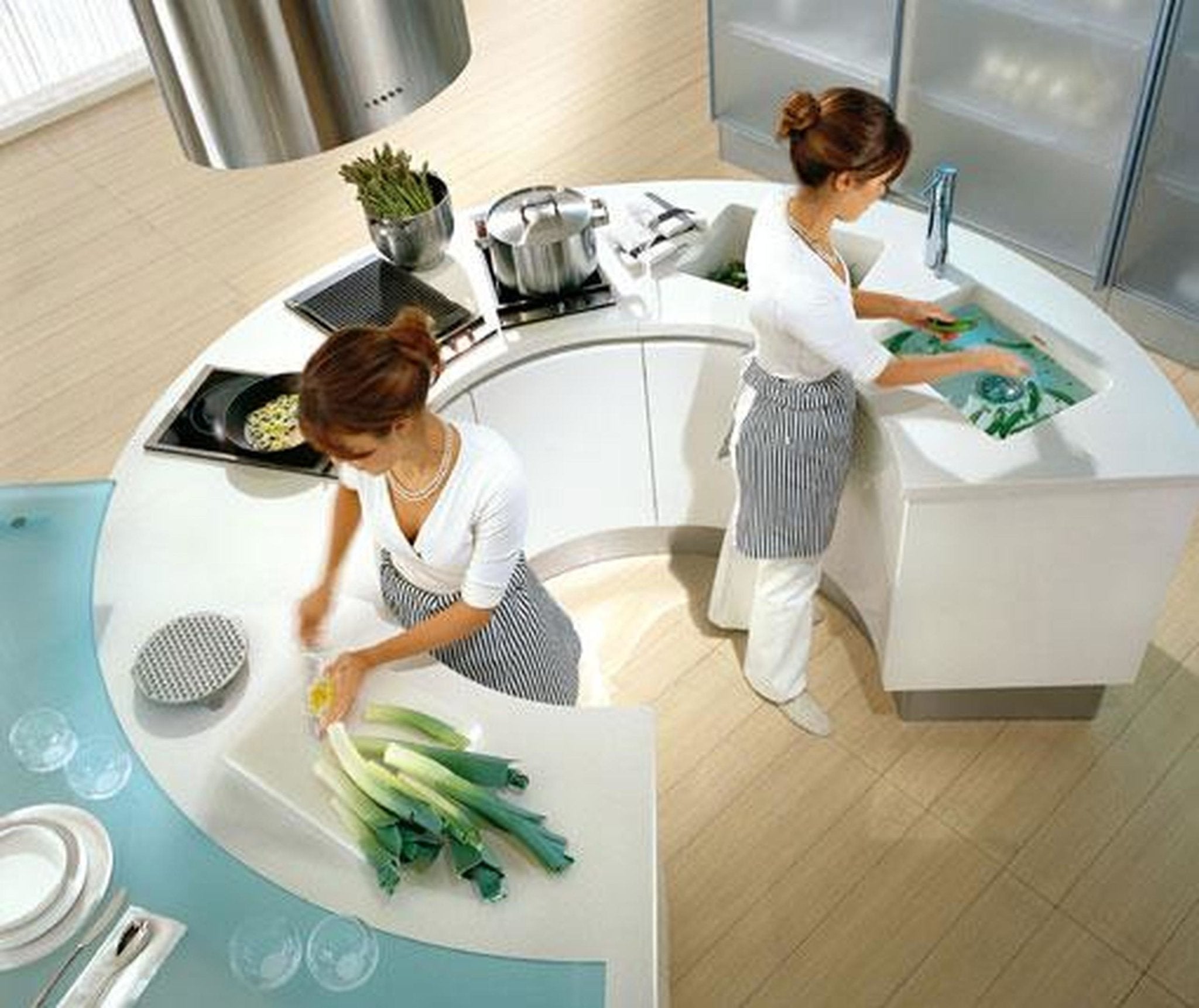Ergonomics In The Kitchen

Being able to work comfortably in a kitchen, whether it is your own or at a restaurant, is one of the most important parts of being a chef. It is easy to think that once you have all the right tools; a good set of knives, the best appliances, and a great chef’s bag, that you are set to work in any kitchen.
The fact is, there can be environmental elements at play while working in the kitchen. This is called ergonomics and in the kitchen, it is all about flexibility, adaptability, minimum wasted movement, and efficiency. This is why it is important to get your kitchen set up to be as ergonomic as possible to the benefit of you and any chef.
What is Ergonomics?

Ergonomics is not a new concept. It is most commonly heard in the likes of office buildings where employees sit at desks all day, but can and does in fact play a huge role in the kitchen as well.
Ergonomics is the relationship between one’s body and how it interacts with the environment around them. If that environment is not made to fit what the body needs then the best thing to do is to fix the ergonomics versus having to make yourself fit in an uncomfortable environment.
There are a few options for how this can be done within the kitchen. If you are a chef who is looking to make your work or home kitchen environment more suitable to you and ergonomically friendly then these tips and tricks are here to help.
All About Height
It can be surprising how much height can play a role in the workflow and ergonomics of a kitchen. From the counters to the sink, to your cabinets, it all has to be at the right height in order to be the most effective while you move about and cook.
1. Counter Height

You will probably want to start out with the height of your counters. These will play a pivotal role in the preparation and cooking of your food, so it is important that your counters fit you just right in the height department.
Most homes will come with a standard sized counter-top, but that doesn’t mean it is one size fits all. In fact, to get the most out of your counters you may need different heights to serve different purposes in your kitchen.
This will most likely lead to you needing to get custom-built counters. If you are able to do it it is highly recommended that you do as it will make the most difference when it comes to achieving the right ergonomics in your kitchen.
The best choice is including two or more counters of varying heights. A lower one that stands roughly between 34 to 38 inches tall and a taller one that stands between 44 to 46 inches tall.
The shorter counter will be used for all your food preparation. This includes stirring, slicing, or chopping your ingredients, getting them ready to be cooked. The taller counter, which will stand essentially at bar height, will be used for foods that are ready to be served or other tools that you are not using right at the moment.
While the prospect of choosing custom counters may seem daunting, you will love how effortless your movement and work in the kitchen can become. If you are still having trouble figuring what height you should use, a good rule of thumb is to consider the height of the counter in relation to your elbow.
To do this, you will want to bend your forearm and pretend you are stirring a bowl. While in this position you will need to measure the distance from the floor to your bent arm. The optimal working height is this distance minus 3 to 6 inches or 10 to 15 centimeters.
2. Reaching Height

When it comes to your kitchen cabinets it is best that you never have to climb in order to reach anything you may need. Utensils, for example, should always be readily available and within reaching height.
For this reason, it is best to not have your cabinets hung too height on your kitchen wall. With many kitchen tasks needing to be repeated over and over again it is important that you aren’t doing any unnecessary stretching to reach the tools you need.
This also goes for your dishwasher and oven. Neither should be flush with the ground, but should instead be within reaching distance.
Add a Little Bounce In Your Step

Though it may not be the first thing you think of when it comes to ergonomics in your kitchen, installing a good floor is definitely something you should consider. Especially since this is what your feet will be standing on the entire time you are working in the kitchen.
A good tip is to avoid any material that will be hard on your legs and feet. Materials such as terra cotta, ceramic tile, or stone are sure-fire ways to leave your legs feeling uncomfortable after you have finished in the kitchen.
Some better options are materials that provide a “bounce” to your step. These would include wood, rubber, or even cork. These types of flooring will provide that “bounce” as well as be easier on your feet and legs while you cook.
No matter what material you decide to use, it is equally as important that the floor can be cleaned effectively and thoroughly. You don’t want a floor that absorbs any kind of grease, water, or food that will end up causing accidents.
If, however, you aren’t able to change your floors a solid backup plan is finding small rugs or placemats with non-slip padding. You can place these strategically throughout your kitchen in the higher traffic areas such as the sink, stove, and food preparation counter.
Everything Needs a Place
The last part of establishing an ergonomic kitchen is something that anyone can do in their kitchen. That is making sure your appliances and tools have a specific place and that that place works for your workflow.
Every working area of your kitchen should have access to the correct tools. Towels, dish soap, and sponges should be near the sink. Oils, spices, pots, pans, and cooking utensils should all be within reach of the stove. Knives, peelers, and cutting boards should be near the food preparation counter. Make your kitchen task-centric.
Essentially everything should have its place in order to have the most minimal wasted movement and the best efficiency while cooking. This kind of ergonomic environment will ensure that not only is the workflow perfect, but safety as well.
Additionally, if you have multiple people working in the kitchen together this will allow for better flow. No chef should be interrupted in the middle of his work and you can prevent that by making sure everything is in its place.
One last option for your kitchen design is to have the waste disposal and separation area near the sink. This will make it easier to scrape the waste off plates or the trimmings off your cutting board straight into the wastebasket. This again prevents unnecessary movement and will save you time in your kitchen.
Even if you can’t include every ergonomic suggestion for your kitchen, just utilizing a few will make a world of difference. The benefits of an ergonomic kitchen are something chefs should definitely get behind and start implementing. Bring comfort and efficient work productivity to your kitchen by making it ergonomic.
0 comments



